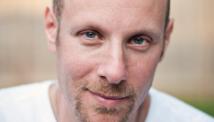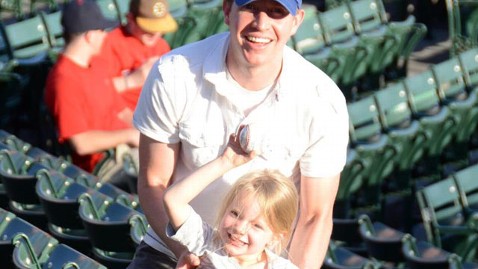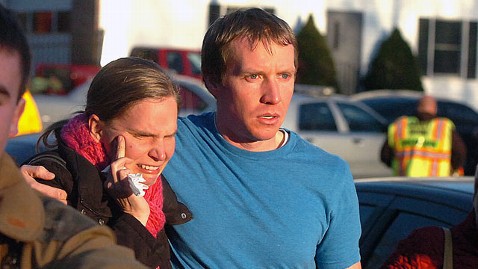Bobby Petrino was named head coach at Western Kentucky, months after being embroiled in scandal at University of Arkansas
STORY HIGHLIGHTS
- Bobby Petrino was named the new football coach at Western Kentucky this week
- Hiring came just months after he was fired from Arkansas amid scandal
- Jeff Pearlman says, sadly, this is no surprise in big-time college sports
- He says the vast majority of players are ultimately hurt by the behavior of coaches and administrators
Editor's note: Jeff Pearlman is the author of 'Sweetness: The Enigmatic Life of Walter Payton.' He blogs at jeffpearlman.com. Follow him on Twitter.
(CNN) -- I have a dog named Norma.
She is a small beige cockapoo who barks at the mailman.
I would not trust Bobby Petrino to watch her.

Jeff Pearlman
I also would not trust Bobby Petrino to take my car in for a tire change. I would not trust Bobby Petrino to deposit my Aunt Ruth's Social Security check. I wouldn't trust him to clean my bowling ball, shop for a Christmas ham, change a twenty for two tens, tell me the time or recite the proper lyrics to Blind Melon's "No Rain."
This is not because I am a particularly untrusting person.
No, it's because I think Bobby Petrino is slime.
In case you missed the news, two days ago Western Kentucky University held a press conference to announce that Petrino, undeniably one of the nation's elite football minds, had agreed to a four-year, $850,000 per year deal to take over the Hilltoppers.
With nearly 400 giddy sports fanatics in attendance, Petrino, standing alongside Todd Stewart, the school's athletic director, spoke of honor and loyalty and love and redemption. The ensuing press release, issued by Western Kentucky's sports information department, was straight out of Disney: 101. It made Petrino sound like a cross between Vince Lombardi, Martin Luther King and Gandhi; God's gift to young men seeking to better themselves.
Petrino fired as Arkansas head football coach
What it failed to mention—and what the school desperately wants everyone to fail to mention—is that Petrino may well be the least ethically whole man in the, ahem, ethically whole-deprived world of Division I collegiate sports.
Why, it was only seven months ago that Petrino, at the time the University of Arkansas' head coach, was riding his motorcycle when he crashed along Highway 16 near Crosses, Arkansas.
When asked by school officials to explain what had happened, he failed to mention that, eh, also on the bike was Jessica Dorrell, a 26-year-old former Razorbacks volleyball player who worked as the student-athlete development coordinator for the football program. It turned out that Petrino, a married father of four, was not only having an affair with Dorrell (who was engaged at the time), but was a key voice on the board that hired her for the position when she wasn't even remotely qualified.
During an ensuing university investigation, it was determined that Petrino made a previously undisclosed $20,000 cash gift to Dorrell as a Christmas present.
Ho, ho, ho.
To his credit, Jeff Long, the school's athletic director, defied the wishes of every pigskin-blinded Razorback fan and fired Petrino. In a statement, he rightly wrote that, "all of these facts, individually and collectively, are clearly contrary to character and responsibilities of the person occupying the position of the Head Football Coach—an individual who should serve as a role model and a leader for our student-athlete."
Now, ethics and morals and character be damned, Bobby Petrino has returned, spewing off nonsense about second chances (Ever notice how garbage men and bus drivers rarely get the second chances we are all—according to fallen athletic figures—rightly afforded as Americans?) and learning from mistakes and making things right.
Western Kentucky, a school with mediocre athletics and apparently, sub-mediocre standards, has turned to a person who lied to his last employer about the nature of an accident involving the mistress he allegedly hired to a university position she was unqualified to hold. Please, if you must, take a second to read that again. And again. And again.
Bobby Petrino, holder of a Ph.D. in the Deceptive Arts (he also ditched the University of Louisville shortly after signing a long-term extension in 2007, and quit as coach of the Atlanta Falcons 13 game into his first season later that year. He informed his players via a note atop their lockers), will be the one charged with teaching the 17- and 18-year-old boys who decide to come to Bowling Green about not merely football, but life. He will be their guide. Their compass. Their role model.
Bobby Petrino and social media prove a bad mix
Sadly, in the world of Division I sports, such is far from surprising. This has been a year unlike any other; one where the virtues of greed and the color of green don't merely cloak big-time college athletics, but control them. In case you haven't noticed, we are in the midst of a dizzying, nauseating game of Conference Jump, where colleges and universities—once determined to maintain geographic rivals in order to limit student travel—have lost their collective minds.
The University of Maryland, a charter member of the ACC, is headed for the Big Ten. The Big East—formerly a power conference featuring the likes of Syracuse, Georgetown, St. John's and Connecticut—has added Boise State, San Diego State, Memphis, Houston, Southern Methodist and Navy. Idaho moved from the WAC to the Big Sky, Middle Tennessee State and Florida Atlantic went to Conference USA, the University of Denver—a member of the WAC for approximately 27 minutes—joined the Summit League. Which, to be honest, I didn't even know existed.
Rest assured, none of these moves (literally, nary a one) were conducted with the best interests of so-called student-athletes in mind. New conferences tend to offer increased payouts, increased merchandising opportunities, increased exposure and increased opportunities to build a new stadium—one with 80,000 seats, 100 luxury boxes, $20 million naming rights, $9 hot dogs and the perfect spot for ESPN to broadcast its Home Depot pregame show.
Why, within 24 hours of quarterback Johnny Manziel winning the Heisman Trophy, Texas A&M was hawking Heisman T-shirts for $24 on its website (Or, for a mere $54.98, one can purchase his No. 2 jersey).
Percentage of the dough that winds up in Manziel's pocket? Zero.
After another spectacular exit, Petrino eyes football return
That, really, is the rub of it all; of Petrino's crabgrass-like revival; of coaches bounding from one job for another (even as players can only do so after sitting out a year); of Rutgers moving west and San Diego State moving east and athletic department officials moving on up (to a penthouse apartment in the sky); of $54.98 jerseys.
It's the athletes ultimately getting screwed.
Sure, for the 0.5% of Division I football players who wind up in the NFL, the deal is a sweet one. The other 99.5%, however, are mere pawns, sold a dizzying narrative of glory and fame and lifelong achievement, but, more often than not, left uneducated, unfulfilled and physically battered.
They are told a coach will be with them for four years—then watch as said figure takes a $2 million gig elsewhere but, hey, only because it was right for him and his family.
They are told they will receive a great education, then find themselves stuck on a six-hour flight from California to Newark, New Jersey. They are told that these will be the greatest years of their life, that the college experience is a special one, that only the highest of standards exist.
Then they meet their new coach: Bobby Petrino.
Follow @CNNOpinion on Twitter
Join us at Facebook/CNNOpinion
The opinions expressed in this commentary are solely those of Jeff Pearlman.

















